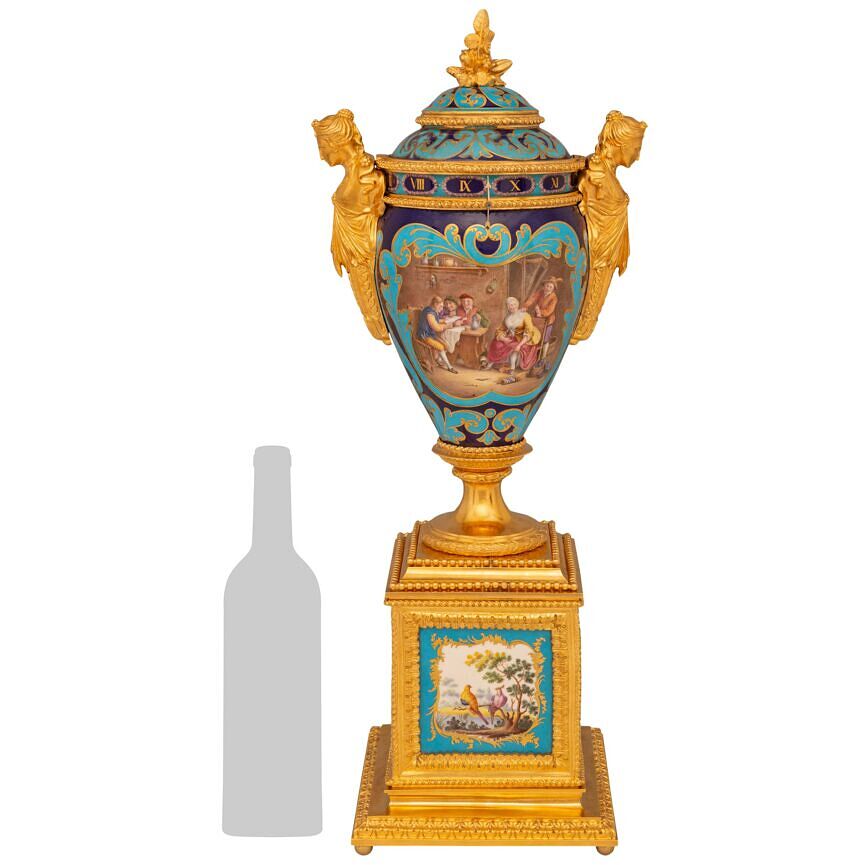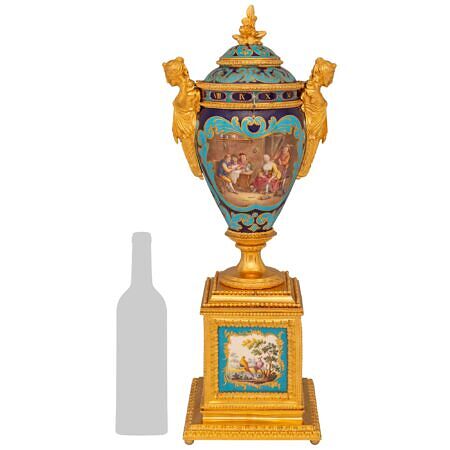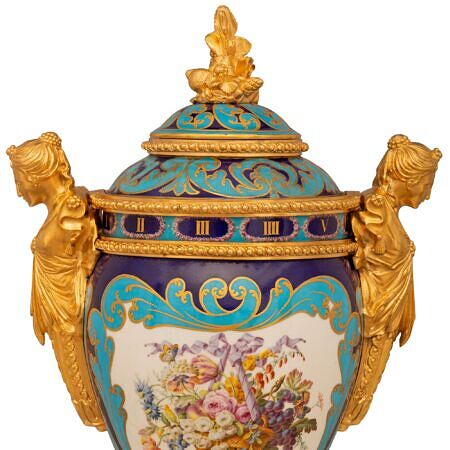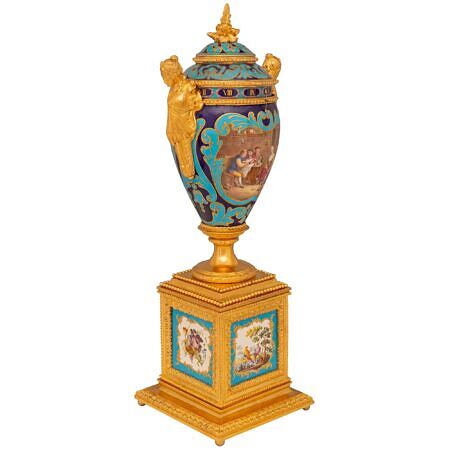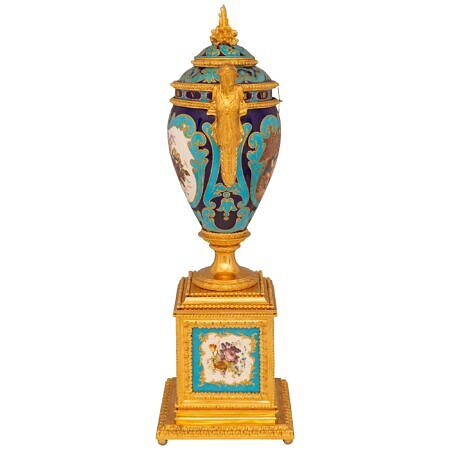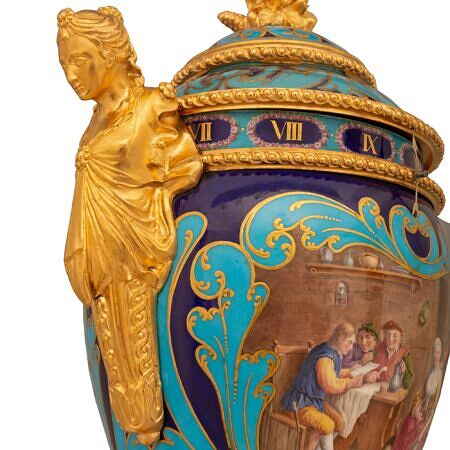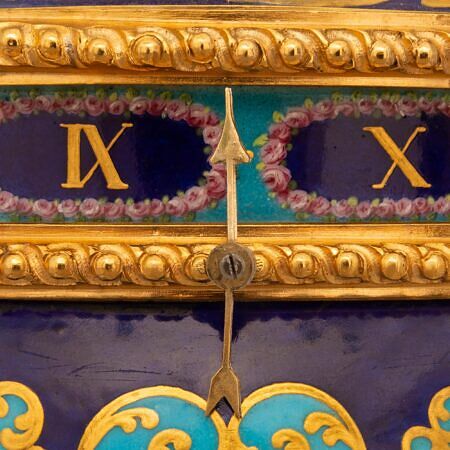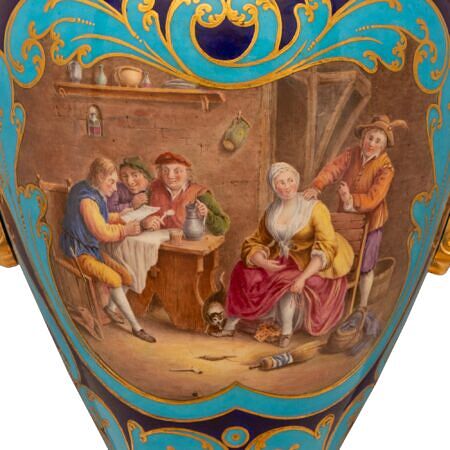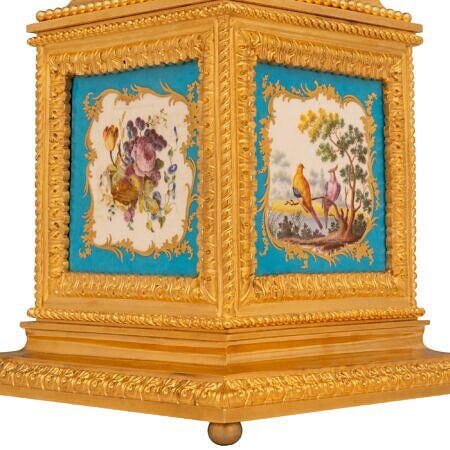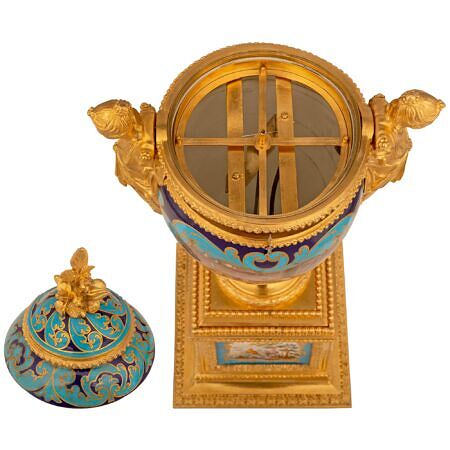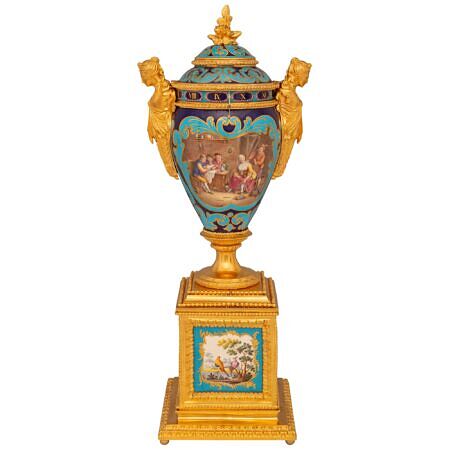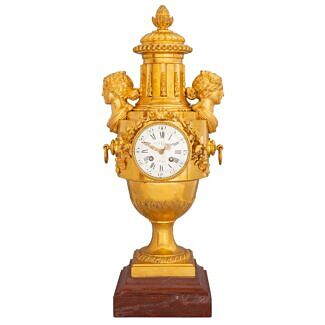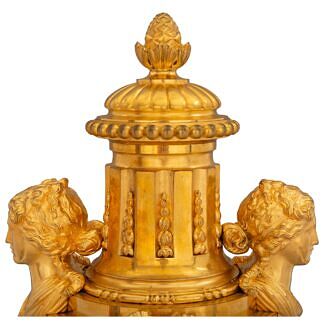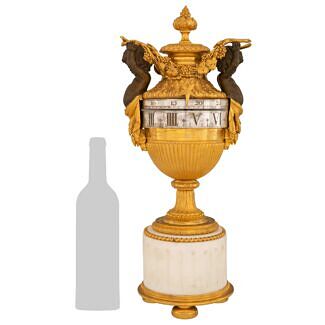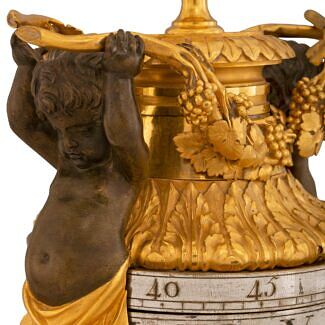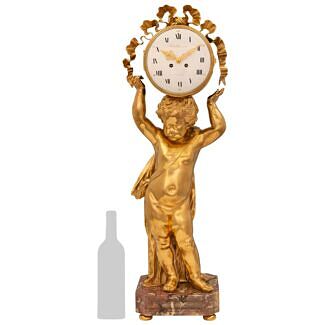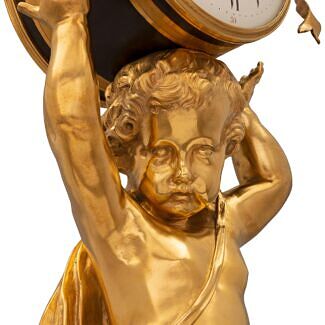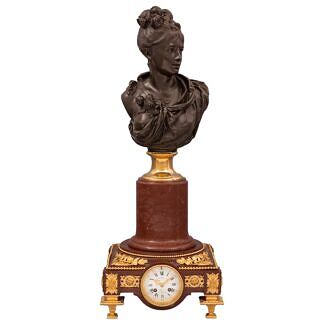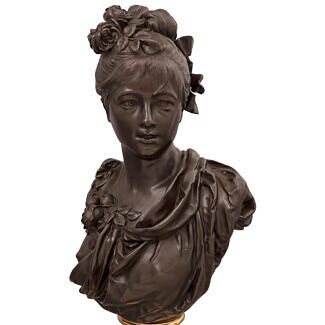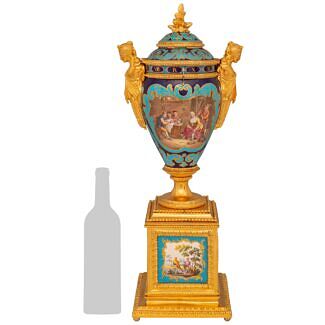A French 19th century Louis XVI st. Sévres porcelain and Ormolu annular clock
List: $39,800.00
A sensational and high quality French 19th century Louis XVI st. Sévres porcelain and Ormolu annular clock. The clock is raised by a square Ormolu base with a Coeur de Rai border design above ball supports. The square pedestal has... — Read More
A sensational and high quality French 19th century Louis XVI st. Sévres porcelain and Ormolu annular clock. The clock is raised by a square Ormolu base with a Coeur de Rai border design above ball supports. The square pedestal has four individual very colorful Sévres porcelain plaques of various birds, flowers and fruits. Above are two levels of Ormolu beaded bands below the circular socle supporting the oblong egg shaped Porcelain clock. The front of the clock has a wonderful scene of figures gathered around a table socializing while a cat roams around. The scene is surrounded by turquoise colored scrolls with gilt accent borders over a cobalt blue background. The opposite side has a sensationally detailed hanging weaved basket filled with an assortment of various cut flowers of various colors. The urn is flanked by two Ormolu female maidens wearing classical attire and having their hair tied in buns. The porcelain dial with a front marker in the shape of an arrow is flanked by two intertwined beaded Ormolu bands all below the lid. The lid with the same continuous turquoise and colbalt blue designs with gilt accents is topped by a richly chased Ormolu finial with flowers. — Read Less
- Item # 10247
-
H: 23.25 in L: 9.25 in D: 7.5 in
H: 59 cm L: 23 cm D: 19 cm
- France
- 19th Century
- Ormolu, Porcelain
- Louis XVI st. Read More
- Sèvres Read More
It was founded through the support of King Louis XV of France and at the initiative of Madame Pompadour to be located near her Château.
Due to Sèvres’ reputation for excellence and prestige, it has always attracted some of the best artists throughout history; François Boucher, Albert-Ernest Carrier-Belleuse, Étienne Maurice Falconet, Alexandre Fragonard and August Rodin, just to name a few. Many of these artworks can be seen at the Louvre Museum and the Musée National de Céramique in France.
Initially, Sèvres created a soft paste porcelain know as Biscuit de Sèvres. In 1768 the Bordeaux chemist Villaris and Jean Baptiste Darnet discovered deposits of Kaolin on French soil. In 1771 the Royal Academy sent a report on the creation of hard paste porcelain at which time Sèvres began manufacturing hard paste porcelain.
Louis-Simon Boizot (1743–1809) was a French sculptor renowned for creating Biscuit de Sèvres models, and was the director at Sèvres from 1774-1800, followed by Alexandre Brogniart(1800-1847) and Henri Victor Regnault in 1854.
Related products
-
# 5470 - H: 23" L: 9" D: 8"
-
# 4001 - H: 20" L: 8" D: 7"
-
# 11693 - H: 35" L: 11" D: 12"
-
# 11482 - H: 33" L: 13" D: 12"


